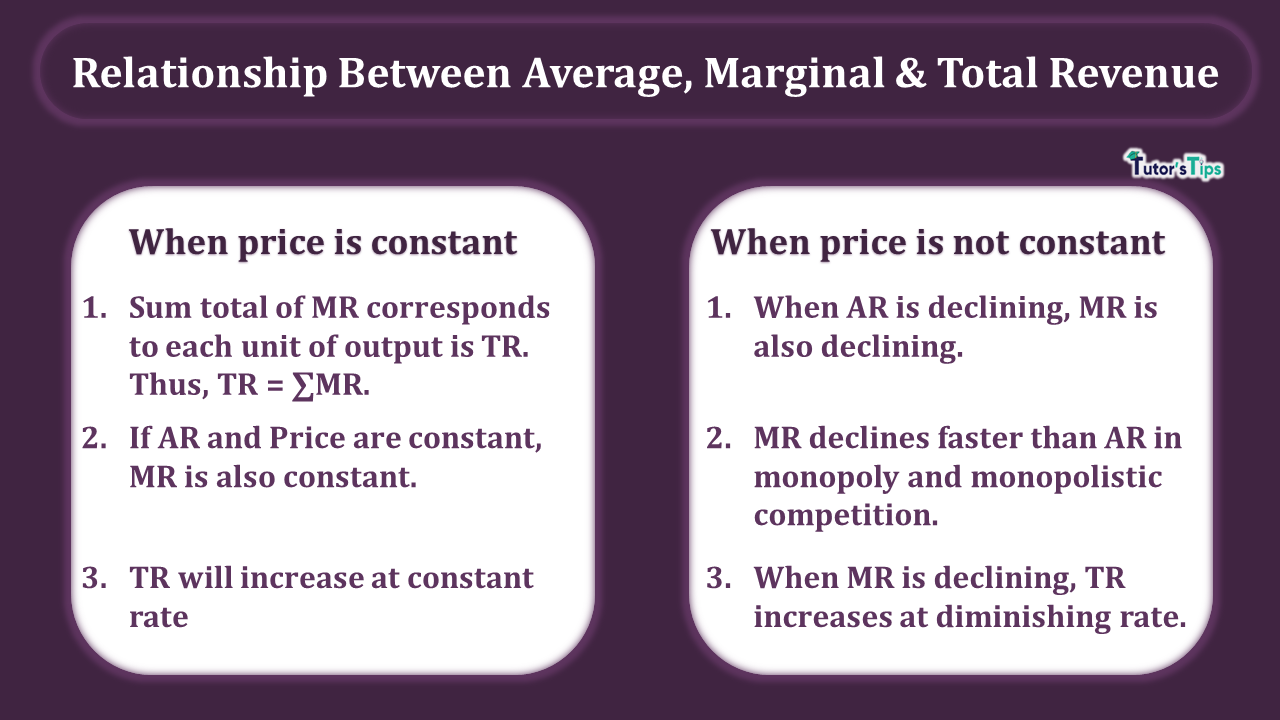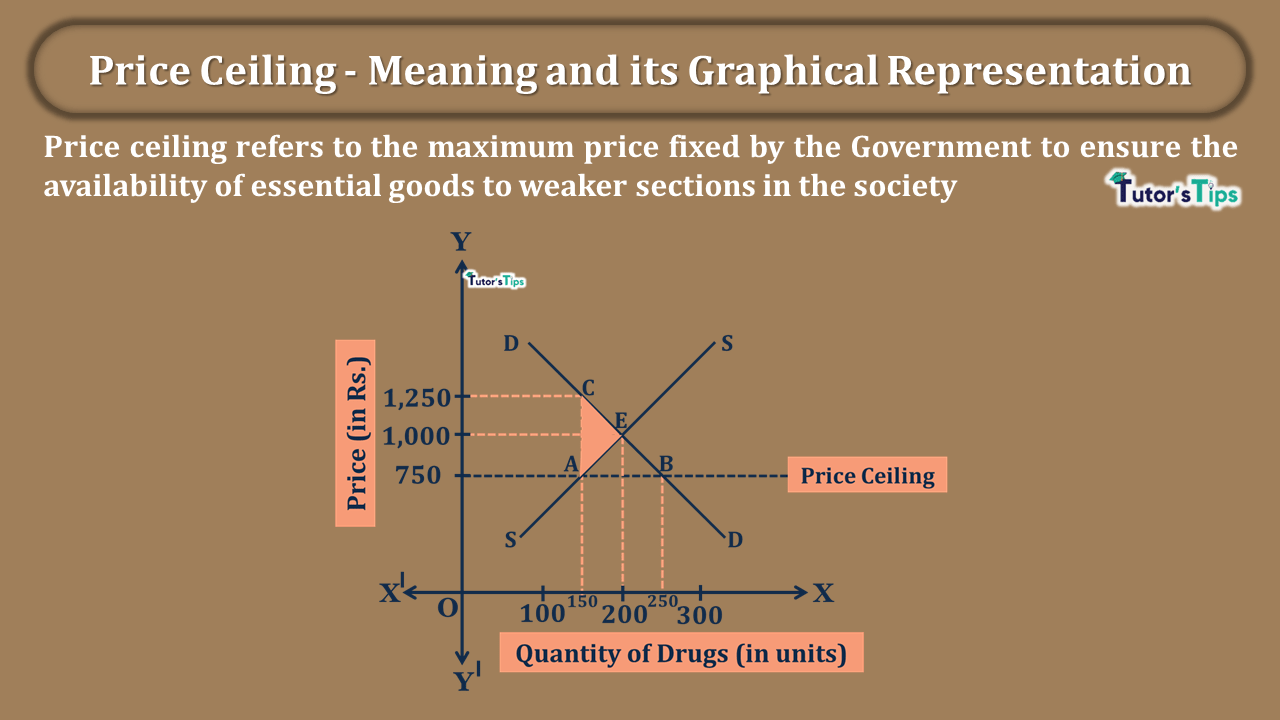Advertisement
Relationship between Average, marginal and total revenue defines the relationships among these terms.
Advertisement
Relationship between Average Marginal and Total Revenue:
As we have already discussed, what these terms are. We have understood the following relations:
- Total Revenue is simply an addition of MR. In other words, TR = ∑MR.
- TR can also be defined as TR = AR × Q or TR = P × Q
- MR = TRn– TRn-1
The relationship between these terms can be classified as:
- When Price is Constant.
- When Price is not Constant.
Relationship between AR, MR and TR When the price is constant:
Under perfect competition, the firms are the price takers. A firm can never set the price of any commodity by its own in this type of market, it has to follow the market price. Since the price is determined in the market, the price is considered as constant. Thus, we can say that Price = AR of the firm. Moreover, it implies that it can sell any quantity at a given price or given AR.
Advertisement-X
Let us assume the price and AR be Rs 20. Given this, the TR, MR and TR schedule of the firm would be:
| Output (in units) | Price (P =AR) | Total Revenue | Marginal Revenue |
| 1 | 20 | 20*1=20 | 20-0=20 |
| 2 | 20 | 20*2=40 | 40-20=20 |
| 3 | 20 | 20*3=60 | 60-40=20 |
| 4 | 20 | 20*4=80 | 80-60=20 |
| 5 | 20 | 20*5=100 | 100-80=20 |
The above schedule explains the following relationship among these concepts:
- MR is simply an addition to TR when one more unit of output is sold.
- In case, the price is constant so the AR, Then the MR is also constant. In other words, AR=MR.
- Constant MR implies that the addition to TR is constant with an additional unit of sold output. Thus, It means, TR will increase at a constant rate.
Graphical Representation:

In fig, it os shown that the output level is OC, TR = OA. Alternatively, the TR can be estimated as multiple of AR and quantity. So that TR = AR * Output. The total area covered in OABC is showing the total revenue of the firm when price is constant.

In fig, it is assumed that the price is constant for the firm. Thus,
Here, AR= MR=OA.
If output is OC,
Advertisement-X
Then, TR = OA*OC = AREA (OABC)
Here, OA refers to price
OC refers to the output
And, area OABC denotes total revenue.
Relationship between Average Marginal and Total Revenue When the price is not constant:
Under monopoly and monopolistic competition, the price or AR tends to decrease with increase in output. In such a situation, the relation can be explained with following schedule:
| Output (in units) | Price (P = AR) | Total Revenue | Marginal Revenue |
| 1 | 20 | 20*1=20 | 20-0=20 |
| 2 | 19 | 19*2=38 | 38-20=18 |
| 3 | 18 | 18*3=54 | 54-38=16 |
| 4 | 17 | 17*4=68 | 68-54=14 |
| 5 | 16 | 16*5=80 | 80-68=12 |
The above table observed following relationship between AR, MR and TR:
- In case the AR is declining, the MR is also declining.
- When AR is declined by Rs.1, MR is declining by Rs.2. Thus, it proves that under Monopoly and Monopolistic Competition, MR declines faster than AR. So that, AR>MR.
- When MR is declining, when more units are added to sales. Thus, TR increases at diminishing rate.
Can MR be zero or Negative:
Advertisement-X
Yes, MR can be zero or Negative. The following schedule clears this concept:
Output(in units) | Price or AR | TR | MR |
| 1 | 70 | 70 | 70-0=70 |
| 3 | 50 | 150 | (150-70)/2 = 40 |
| 5 | 30 | 150 | (150-150)/2 = 0 |
| 6 | 20 | 120 | (120-150)=-30 |
Graphical Representation:

The above fig, it is observed that:
- Upto point A, The TR is increasing at decreasing rate. This is due to decraesing MR.
- At point A, the TR is maximum.
- Beyond Point A, TR starts declining, because the MR is negative.
- In the situation of Zero price, AR and TR curve touches the X axis.
Thanks, and please share with your friends
Comment if you have any questions.
References:
Introductory Microeconomics – Class 11 – CBSE (2020-21)
Advertisement-X
Advertisement-Y











Leave a Reply